NAB and its collaborators have made progress in three major areas in the last quarter of 2024.
First, we conducted more field tests and achieved great results. NAB, National Institute of Standards and Technology (NIST), and KWGN-TV (Nexstar Media Group Inc.) have jointly conducted BPS common-view receiver tests at the NIST facilities equipped with authoritative clocks. Two identical BPS receivers, one placed at Boulder, Colorado and the other at Fort Collins, Colorado, simultaneously observed the time delivery performance of the BPS signal transmitted from KWGN-TV tower. This is a well-known signal stability test in the field of frequency and time metrology. BPS signal stability was found to be comparable to that of dual band GNSS and better than single band GNSS, a result that exceeded our expectations.
The receiver in Fort Collins was 106 km away from the tower but was in line-of-sight (LOS). The receiver in Boulder was only 30 km away but was in non-line-of-sight (NLOS) because of the mountains in signal propagation path. Even in this challenging environment, a 22-day long test showed a time deviation (TDEV) value of 2 ns for all averaging periods. This test data includes a day of heavy snowfall. NAB and NIST presented the field test results at ION ITM/PTTI conference held in January 2025.
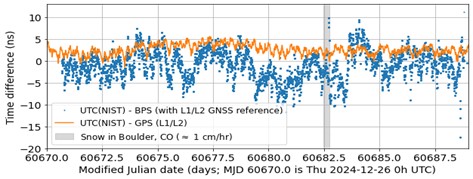
Second, BPS has been deployed at WNUV-TV in Baltimore, Maryland, making WNUV the second BPS-enabled TV station after WHUT in the Washington-Baltimore area. WNUV has been set up as a follower to WHUT, meaning WNUV derives its time from WHUT’s BPS signal. A receive antenna was mounted at 150 ft high above ground at WNUV site to receive WHUT’s signal without obstruction. Proof of leader-follower configuration is an important step for nationwide BPS deployment.
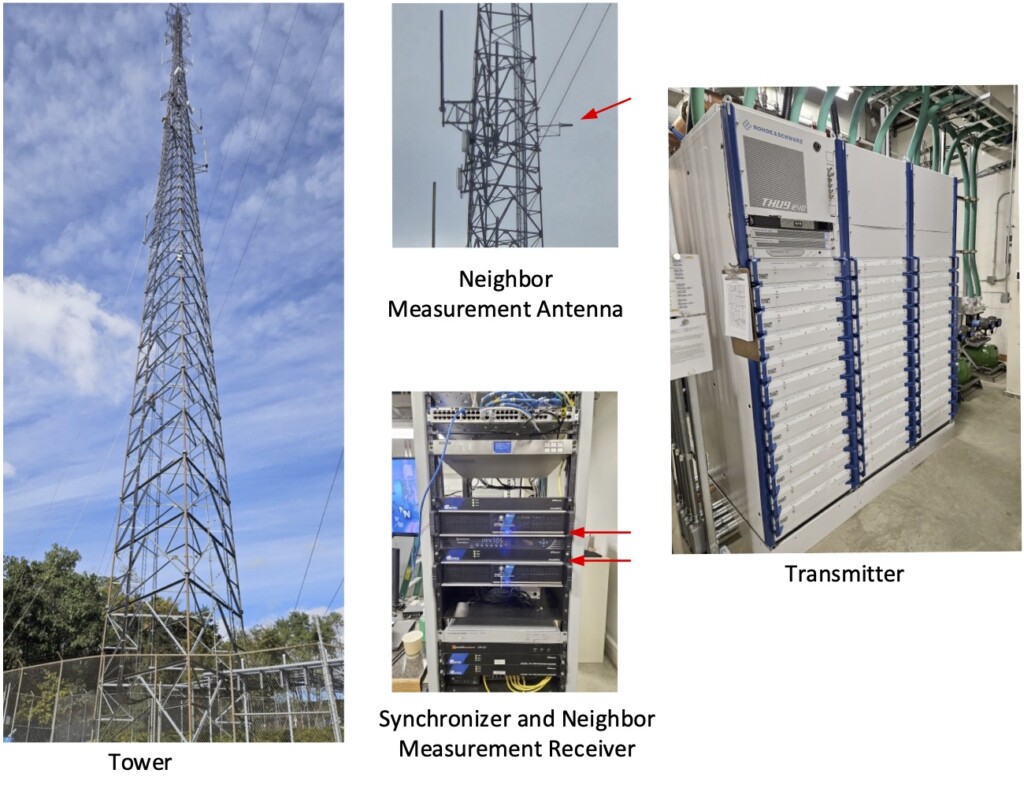
We are testing the performance of leader-follower configuration at the NAB lab, which receives the signal from both WHUT and WNUV. NAB has installed receive antennas on the roof and measured cable delays. We have LOS to WHUT with a strong reception; we are unsure if we have LOS to WNUV, but we receive a reasonably good signal from the WNUV antenna which is 60 km away. NAB lab is now equipped to measure and monitor the BPS signals from both WHUT and WNUV.
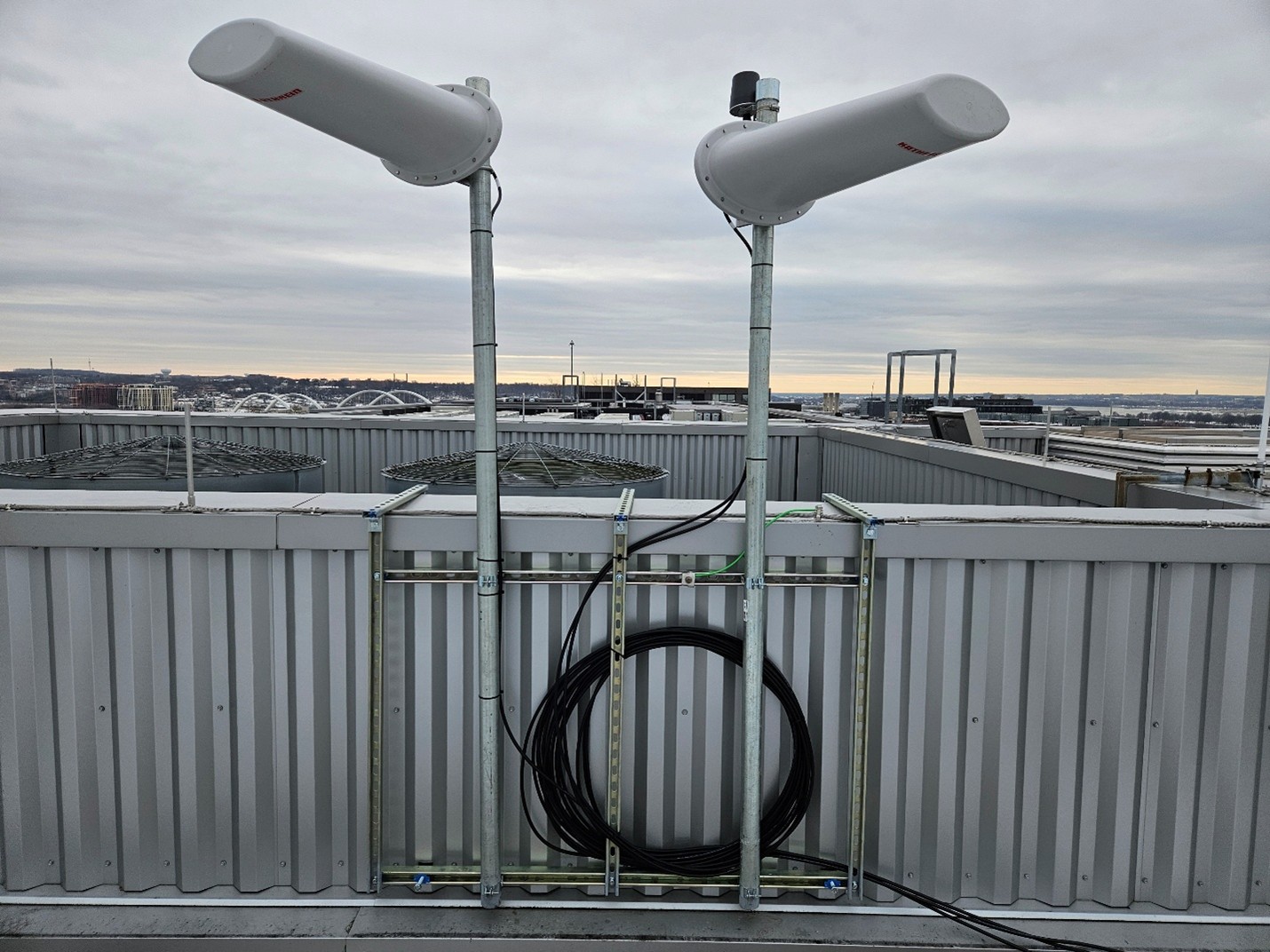
Initial tests show that the leader-follower configuration works, and that WNUV has been successfully using WHUT’s time as its reference. We received all the BPS signals in NAB lab and monitored their accuracy by comparing BPS time to GPS time. The following picture shows how the 1PPS signals from GPS (C1), WHUT (C2), WNUV (C3), and NAB Lab test station (C4) align on the oscilloscope within a few nanoseconds of each other.
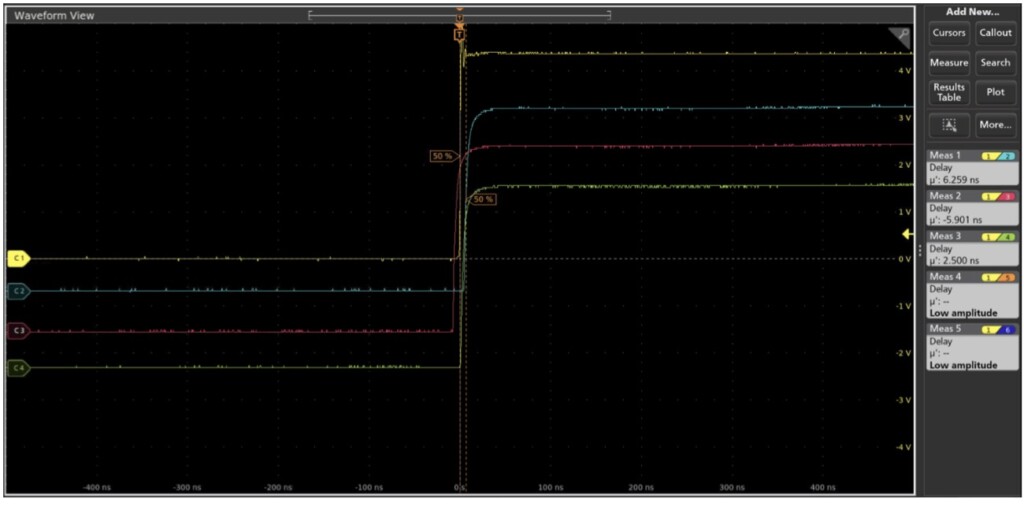
Third, NAB, in collaboration with Triveni, has developed the early (beta) version of BPS network operations center (NOC). The health status of all the BPS related modules in a TV station is sent to the NOC along with key neighbor measurement data. When fully developed and deployed at every BPS-enabled station, the NOC will help identify system anomalies and isolate out-of-sync transmission facilities.
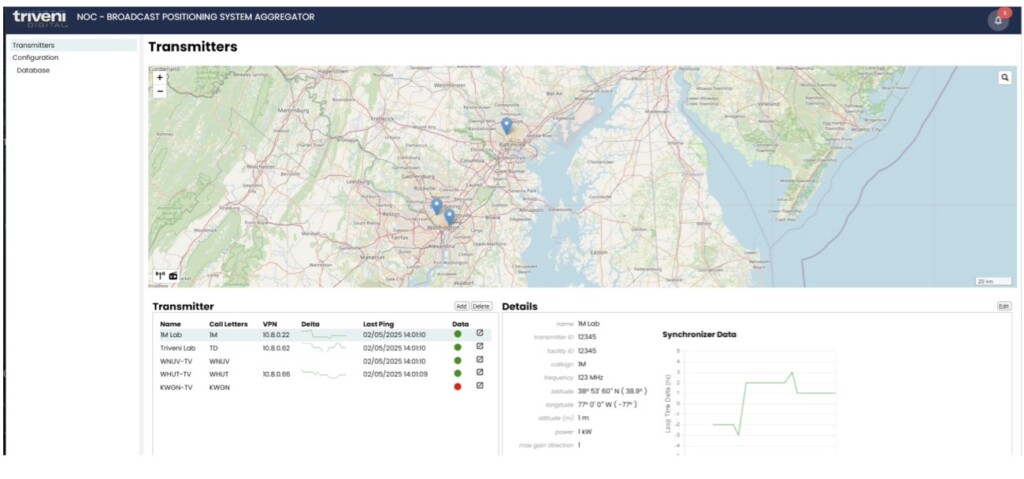
In the above picture, KWGN’s status is shown in red because the BPS Aggregator software, which sends data to NOC, has not been installed at KWGN yet.
The 2025 NAB Broadcast Engineering and IT (BEIT) Conference will offer sessions that will discuss the above-mentioned test results and achievements.

